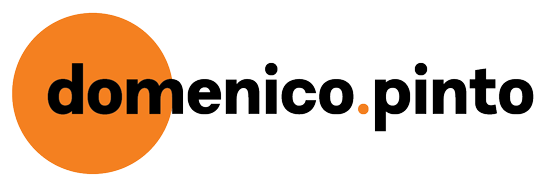
Nomad or Nomad Not: Is Albania Ready to Lead the Remote Work Revolution?
Introduction: The Past Meets the Present
A year ago, as I disembarked in Tirana, Albania, it struck me that I was stepping into a world misunderstood by many. The rhetoric surrounding Albania often conjured images more suitable for a crime thriller than a potential haven for digital nomads. However, the story has taken a radical turn in just a year, and I’ve been fortunate to witness and even partake in this transformation.
My Ringside Seat to Change
In the last 12 months, Albania has gone from being a question mark on the map to a topic of discussion in digital nomad circles. From my various roles—advising on the digital nomad visa, experimenting with a pop-up nomad village in Vlora, and being a part of different entrepreneurial ecosystems—I’ve been able to see the nation not just adapt, but evolve.
The Adaptability Quotient
In a short span, Albania has demonstrated an uncanny ability to respond to the needs of its ever-growing international community. To illustrate this point, let’s talk about coffee—something digital nomads consume in industrial quantities. A year ago, you’d have been hard-pressed to find cafes offering plant-based milk. Today, oat milk lattes are as common as the delicious traditional burek (okay, almost 🙂). It’s a small but telling sign of how quickly the country can adapt.
The New Frontier: Vlora’s Digital Nomad Village
One of the most compelling attributes of Albania for digital nomads is the nation’s tapestry of smaller cities, each imbued with its own unique flavor and opportunities. Coupled with the seasonality of bustling tourist destinations for only a few months a year, Albania poses an intriguing problem and opportunity. Many smaller cities in the country face declining populations, in part due to a significant brain drain, which makes Albania one of the most affected regions in Europe in this regard. Yet, paradoxically, this challenge is what makes Albania particularly alluring for the nomad community.
I had the unique opportunity to be part of establishing the first (pop-up) digital nomad village in Vlora. It was a great learning curve, understanding what it takes and what is still needed to establish a village successfully. I’ll give you a hint it goes way beyond merely installing high-speed Wi-Fi or adapting spaces to cater for co-working.
Now, why is the idea of smaller cities and seasonality so important here? Much like Madeira Island in Portugal, where I’ve spent a considerable amount of time, Albania offers diverse locales that can cater to different “categories” of nomads. Whether you’re a mountain-lover or a beach bum, prefer the hustle and bustle of a city or the serenity of a lakeside retreat, Albania’s geographical diversity accommodates you—all often within a one to two-hour drive from one another.
Moreover, the concept of seasonality can turn into a significant advantage. Take the example of Bansko in Bulgaria—a winter wonderland that transforms into a digital nomad hotspot during off-season months. Similarly, many tourist areas in Albania could follow suit, capitalizing on the six to nine months of the year when the tourists are away to become year-round destinations for digital nomads. Imagine towns bustling in the summer with vacationers, but from autumn to spring, these same places could be teeming with digital nomads, working from cafes or co-working spaces set amid a backdrop of natural beauty.
The Digital Nomad Visa: Not Just Another Policy
When Albania rolled out its digital nomad visa, it wasn’t just a signal to the world; it was a promise to build a sustainable ecosystem for remote work. Having provided input and feedback during the early stages of this visa, it’s heartening to see the government taking tangible steps toward a flexible, yet stable, framework for digital nomadism.
The Community: The Soul of Nomadism
Community is the cornerstone of any thriving digital nomad destination. Sure, nomads are initially attracted by the beautiful beaches and natural landscapes. But what makes them stay? A sense of belonging. To become more than just a pit stop for digital nomad tourists, Albania needs to focus on community-building efforts. These efforts need to be strategic and tailored to the unique characteristics of nomads, who are not mere tourists. And this leads us to a vital question: Is Albania ready for it?
This is about more than just populating co-working spaces or organizing weekly social events. It’s about understanding the unique needs of digital nomads, who are not tourists in the traditional sense. In a rapidly globalizing world, good food, scenic backdrops, and affordable living are not enough to make people stay. There has to be a sense of community, of belonging.
The “Great But” Phenomenon
The overwhelming feedback I’ve gathered resonates with a recurring theme: “It’s great, but…” It seems Albania still has some homework to do, especially when it comes to community building. While the country has made commendable strides in attracting digital nomads, retaining them is the next big challenge.
The Path Forward: Retaining the Nomad
With an influx of countries rolling out digital nomad visas, the competition to attract this mobile workforce is fiercer than ever. And here lies the crux: While we’ve successfully created the frameworks, the next step is to populate these frameworks with lived experiences. The focus should now shift from policies to people. This is not just the government’s task but a collective endeavor for all stakeholders involved, including nomads themselves.
Conclusion: A Journey, Not a Destination
So, where does Albania go from here? The work is far from done, but the course is set. I remain optimistic as part of a collective effort to elevate Albania’s status as a go-to destination for digital nomads. The country has moved past the stage of mere potential—it’s time for actualization.
As someone who has seen the commitment and resources being directed toward making this dream a reality, I’m hopeful for what another year of concerted effort can bring to this beautiful country.





